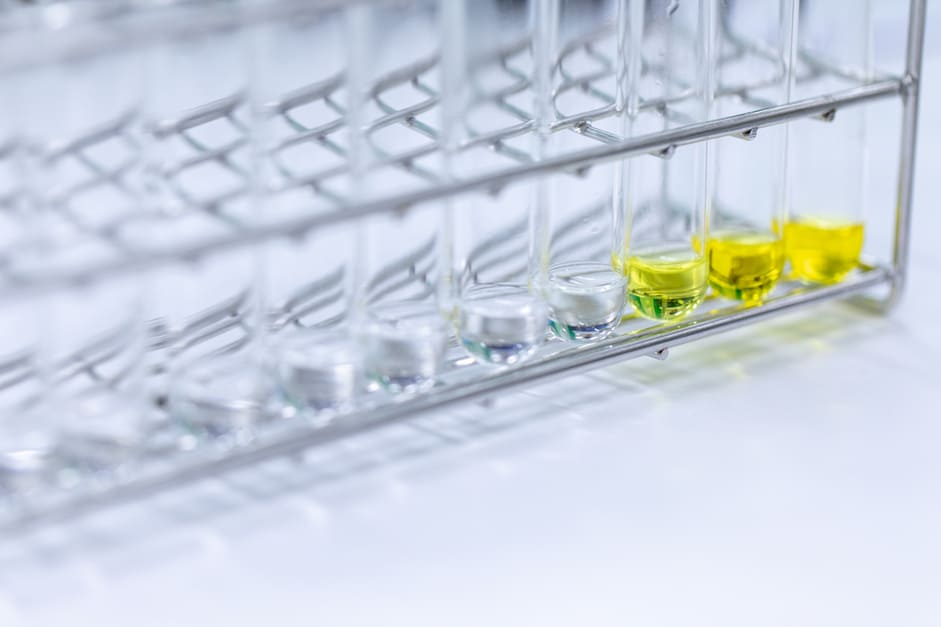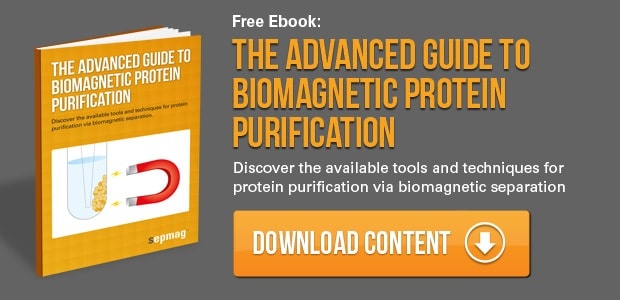Protein purification is a fundamental part of studying proteins, peptides, and nucleic acids, necessary for a wide range of clinical, research and industry applications. But choosing the most appropriate protein purification system can be challenging, especially for researchers who are just starting to think about automating their protein purification protocols.
Automated chromatography systems such as ÄKTA start automate protein, peptide and nucleic acid purification, at laboratory scale. They can carry out affinity and ion exchange chromatography and gel filtration. Magnetic beads are an alternative, quick and powerful way to purify proteins, from single proteins to large complexes, DNA, RNA and antibodies.
What is an automated chromatography system?
Manual protein purification techniques such as differential centrifugation can be time consuming and difficult to replicate. Automated protein purification systems, such as ÄKTA start, are an alternative that can help to overcome these particular issues. Superparamagnetic bead-based protein purification is another alternative to manual protein purification that isn’t limited to low-pressure or low-throughput columns.
Advantages of automated protein purification chromatography
Automated chromatography systems offer several benefits compared to manual protein purification methods, including:
- Easy-to-use protein purification for lower flow rate applications.
- Compact size, which suits laboratory settings.
- Improved recovery.
- Consistent purity and yield.
- Improved reproducibility.
However, there are some limitations. The ÄKTA start and other similar systems aren't suitable for development or production or multi-step purification protocols, and are limited to smaller sample volumes.
Protein Purification Using Magnetic Beads
Magnetic beads are another quick and easy way to purify proteins, including single proteins, large complexes, DNA, RNA and antibodies. Magnetic beads can be used just like a chromatography column resin, e.g. by being pre-conjugated to Ni-NTA (equivalent to nickel chromatography). Magnetic beads can also be used to isolate proteins as part of high molecular weight DNA extraction, RNA purification using DBCO click chemistry, and nucleic acid isolation.
Automated protein purification systems like ÄKTA start are well suited to lab-scale chromatography applications and are especially useful for those just getting started with automated protein purification. For research and development settings, Sepmag LAB and Sepmag A magnetic separators carry out magnetic bead-based protein purification with 1.5, 10, 50 and 400 ml tubes.
What are some advantages of magnetic bead protein extraction compared to other methods?
Magnetic beads can be used for magnetic purification of proteins and other biomolecules in an easy and scalable way. Other advantages of magnetic bead protein purification include:
- Higher purity and yields due to lower nonspecific binding.
- Better reproducibility.
- Lower cost thanks to the higher binding specificity meaning fewer beads are needed. The beads can also easily be reused.
- Faster separation times, with fewer washing step
- Simpler protocols.
- Scalable purification.
- Highly effective screening including for small samples and crude cell lysates.
- Easy to use, with no column or centrifugation needed.
- Magnetic resins offer magnetic bead advantages, for use in chromatography columns
Magnetic bead protein purification protocol
Magnetic protein purification protocols bypass the filtration and centrifugation stages necessary with an ÄKTA start or similar protein isolation system, making the process quicker and easier. The steps involved in a typical protein purification procedure using magnetic beads are:
- Remove the buffer the beads are stored in.
- Wash the beads twice with an appropriate buffer (which depends on the type of bead used).
- Add magnetic beads to the cell lysate containing the target protein.
- Bind the beads to almost every target protein in the sample by rotating the mixture slowly for around 2 hours.
- Apply magnetic force using a magnetic separator to separate the beads and target protein from the lysate.
- Remove remaining lysate.
- Wash the beads with an appropriate buffer.
- Elute proteins with an elution buffer.
Choosing the right protein purification system for your needs
Choosing the most appropriate protein purification method and system for your application is crucial for obtaining high yields and purity. Manual protein extraction methods, e.g. centrifugation or affinity columns, are effective for isolating proteins in bulk.
Automated protein isolation systems allow researchers to perform protein purification easily and quickly without demanding too much space in a lab setting. However, if you need to extract a specific protein, such as a specific antigen, then magnetic bead-based protein purification may be faster, simpler and more effective. Find out more about biomagnetic separation protocols for protein extraction in our step by step guide to protein purification.
Related news
- Limitations and perspectives of Chemiluminescent immunoassay (CLIA)
- Spin Column
- CLIA-label protein conjugation





